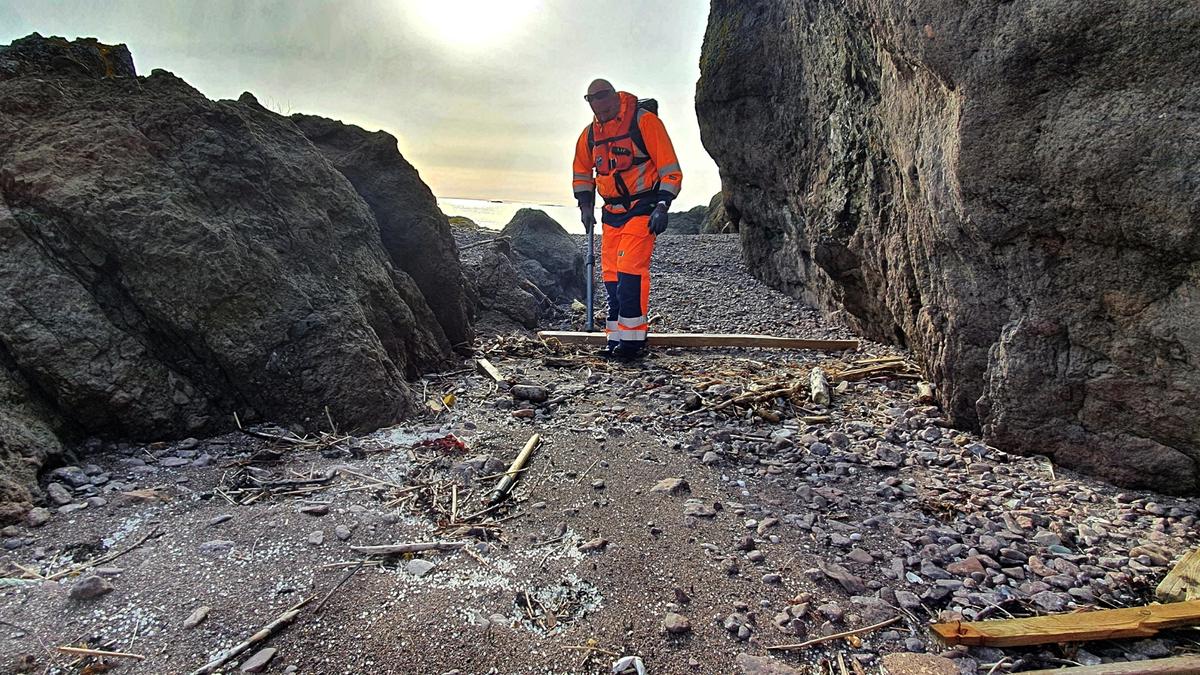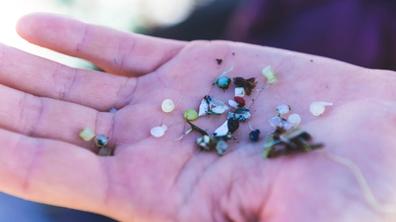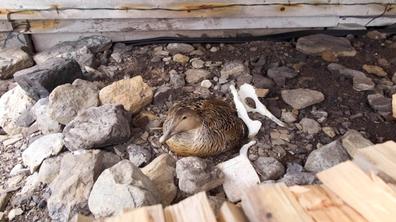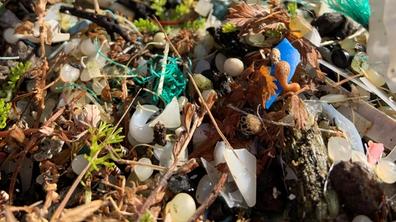In February 2020, 13.2 tonnes of plastic pellets ended up in the sea during transport. This resulted in 782 registered findings on Norwegian beaches, state action and the creative use of cleaning methods.
In mid-March 2020, Fredrikstad municipality received its first tips from people who had observed pellets along the coast. On the following day, the Oslofjord Outdoor Council took part in an inspection of the interior of Hankø island. They were met by beaches strewn with pellets. A clean-up operation of the area was organised by the municipality, together with the Oslofjord Outdoor Council and Miljøstiftelsen Elv og Hav (environmental foundation). They spent a week cleaning up. While the cleanup operation was going on, reports of stranded pellets escalated in more places along the coast.
“We created a public solution together with Fredrikstad municipality whereby people could report findings. We received hundreds of messages from the general public. We received messages about findings as far away as Drøbak, Hurumlandet and the Vestfold coast, and even down to Agder,” explains Nicolay Moe of the Oslofjord Outdoor Council.
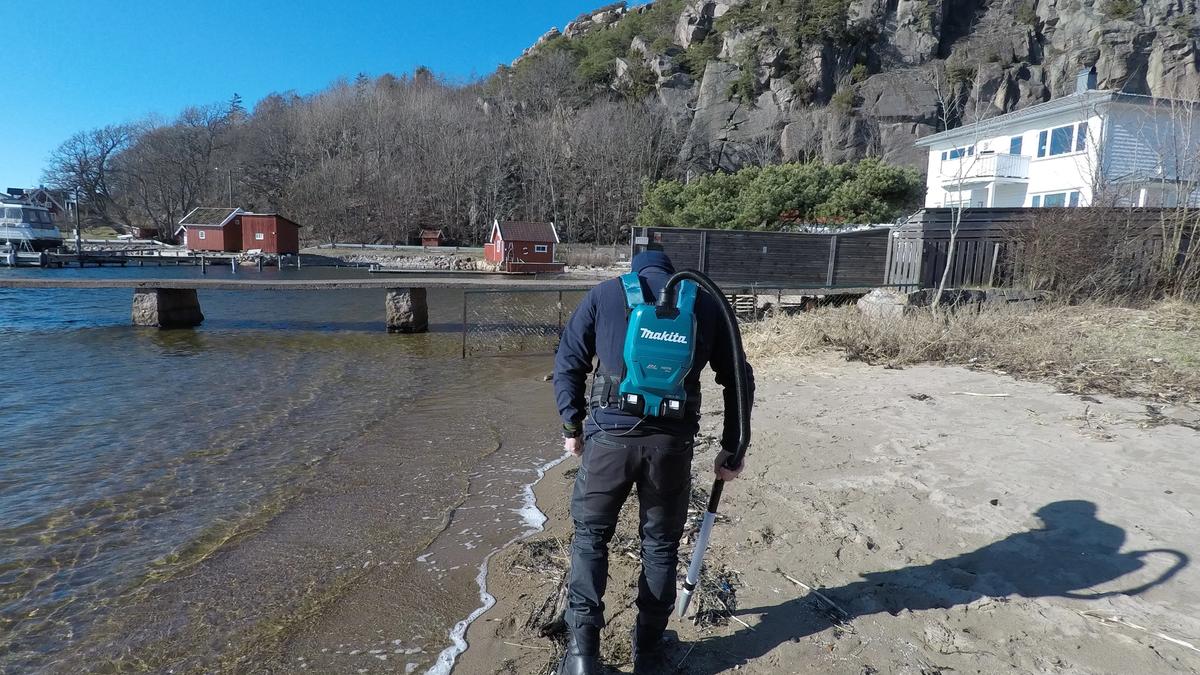
Oslofjordens Friluftsråd, affected municipalities and some environmental organizations did what they could. Dozens of beaches were cleared. In some, they removed several hundred kilos in a short time, but there was no great mobilization and the clearing was challenging, even though the Norwegian Retailers' Environment Fund provided funds for clearing equipment in the form of leaf vacuum cleaners. Bad weather and storm surges also caused the pellets to spread. And one question remained unanswered, because where did the discharge come from?
Where did the pellets come from?

We initially thought it was a local discharge, and we worked with the Norwegian Nature Conservation Association and the County Governor to identify the source," says Nicolay Moe.
It was only when the analysis results from the pellet samples were ready, and the Norner research and development environment started looking into potential manufacturers and areas of use for the pellets, that a source of the discharge became apparent. It was also registered with the Norwegian Coastal Administration, where the correlation based on the data it possessed was not obvious. The Norwegian Coastal Administration had registered a discharge southwest of Stavanger, a significant distance away from where the findings were and it was unlikely that the discharge could spread to the Oslo fjord. Nor had the reported volume of pellets triggered an alarm at the agency, which is responsible for the national preparedness for acute pollution. When it began to investigate the matter more closely, it transpired that the discharge location and amount in its system did not match what actually occurred in the North Sea on 23 February, 2020.
On 23 February, the vessel Trans Carrier sailed from Rotterdam to Tananger with a cargo of 23 tonnes of plastic pellets. When the vessel entered the North Sea, it encountered inclement weather, which caused a hole to appear in one of the containers on deck. Plastic pellets spilled out of the container into German-Dutch waters, a good distance from the Skagerrak Straits and the Norwegian coast. When the Norwegian Coastal Administration carried out a powertrain calculation, it became apparent that the locations at which the findings had been made were consistent with how the discharge had spread from the discharge point in the calculation. The source of the discharge was finally clear and many questioned whether the outcome could have been different if the alarm had been triggered immediately after the discharge.
“Under such weather conditions it would not have been possible to do anything about a discharge like this. We couldn’t detect it from an aircraft as our sensors wouldn’t have necessarily discovered it. It would have been very difficult to capture this in the sea in the time following the discharge,” says Rune Bergstrøm of the Norwegian Coastal Administration.
A unique discharge in a Norwegian context
“When we realised how large this was, there was no apparatus in place that could handle this,” says Nicolay Moe of the Oslofjord Outdoor Council.
13.2 tonnes of pellets ended up in the North Sea from the discharge point and had been spread by ocean currents and wind over a large area with findings along the coast around the Skagerrak Straits in Sweden and Norway. Nationally, we had a situation in which there was a need to clean up pellets across municipal and county boundaries, but it was unclear who had overall responsibility. There was a need for a significant mobilisation of resources, time passed, the weather and the tide moved the pellets, while the municipalities and organisations did the best they could. Norway was in the midst of a unique pollution incident in modern times. There were no comparable incidents to use as a guide. Thus, on an administrative level, it was necessary to clarify an issue that was new regarding the Pollution Control Act: did a discharge of plastic pellets constitute acute pollution? When the decision came from ministry level, it became clear that the Norwegian Coastal Administration was responsible and could intervene on behalf of the state.
On 7 May 2020, for the first time, the Norwegian Coastal Administration announced state action in which an acute pollution incident comprised a plastics discharge at sea, not an oil discharge.
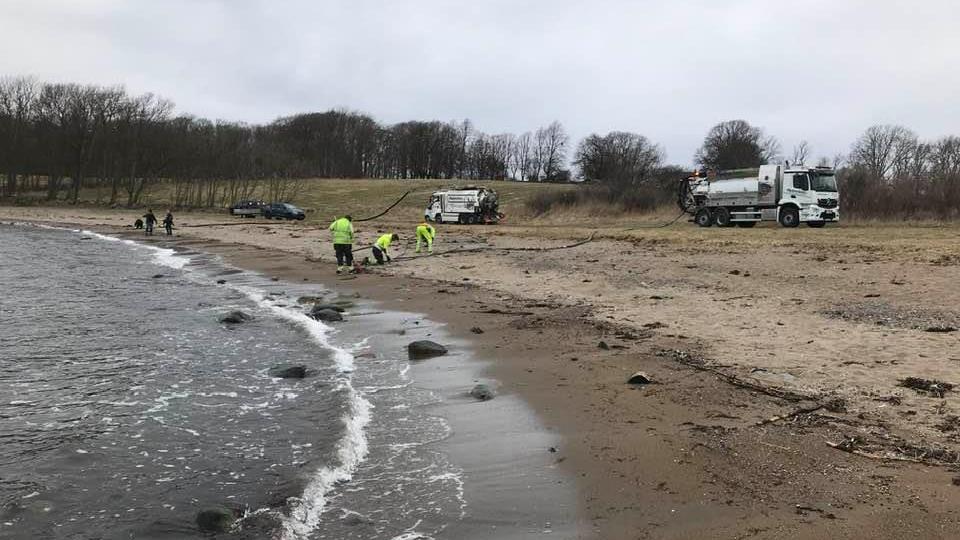
Operation Plastic pellets
"We set the wheels in motion and mobilized the inter-municipal committees for acute pollution (IUA) from the Swedish border to Agder. We used them to inspect all the locations at which stranded pellets had been reported. Around 700 messages translated into 500 locations. 100 of the locations were so littered that it was necessary to conduct a clean-up operation,” says action supervisor Rune Bergstrøm, at the Norwegian Coastal Administration.
The clean-up operation was distributed between the IUA in some areas, while the Oslofjord Outdoor Council was tasked with coordinating the work in its area of activity. It had already addressed the clean-up operation, played a role as coordinator for marine litter in the Oslo fjord and was well known in both clean-up operations and among industry actors. Nicolay Moe continued to coordinate the work that began in mid-March when the first stranded pellets were reported.
“We have included five actors in the work. Miljøstiftelsen Elv og Hav (environmental foundation), Frelsesarmeen Jobben Oslo (Norwegian Salvation Army initiative), the Plastic Guerilla Movement and Marinreparatørene (local marine environment protection agency in the inner Oslo Fjord area)”. A total of 30 to 40 people have been responsible for the practical clean-up operation.
By the end of 2020, around 10,000 working hours had been spent on the clean-up operation coordinated by the Oslofjord Outdoor Council. A total of four tonnes of pellets were cleared. Since pellets can easily move, cleaned-up areas can be further impacted.

Tested and developed cleaning methods for clearing pellets
When millions upon millions of white micro plastic balls had to be cleared from cracks in rocks, sandy beaches, pebble beaches, vegetation and on cliffs, it became clear that no single method could be used at each location.
“We initially looked at other countries in order to gain experience, but what we actually found was a huge interest in this globally because so little had been done. There has therefore been a lot of work on methods and many people have been creative in this regard,” says Rune Bergstrøm.
Several cleaning methods were utilised and tested during the clean-up operation, such as sieving, dust suckers and leaf suckers, suction truck with hoses, excavator with water bath and hand-picking. Dust suckers and leaf suckers were most effective on hard services and in vegetation. On sandy beaches, sieving was primarily used, in which sieving boxes with different mesh sizes were attached to wheelbarrows. Clean-up operations were also conducted using a suction vehicle and excavator with a water bath, in which the latter proved to be effective.
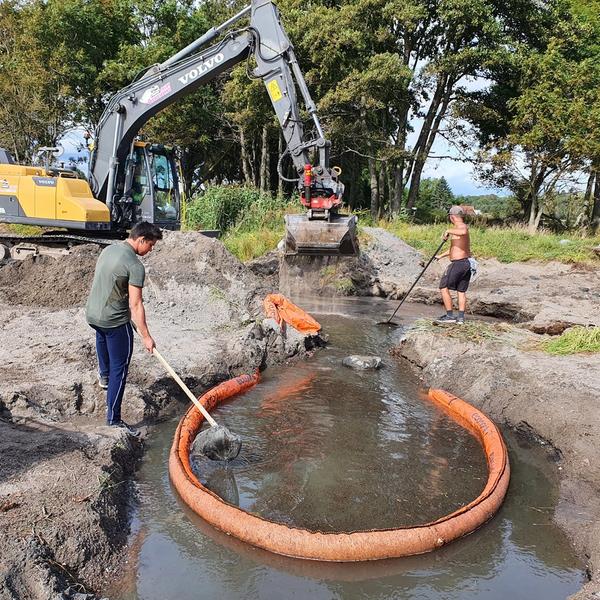
At Jeløya in Moss municipality, an area of 200 m² was cleared using this method. An excavator removed the top layer of sand in which the pellets were mixed. This was then placed in a water bath, the pellets were separated and the clean sand was returned to the beach.
“This was a cost-effective method and the environmental impact was regarded as low,” says Nicolay Moe of the Oslofjord Outdoor Council.
“This was a cost-effective method and the environmental impact was regarded as low,” says Nicolay Moe of the Oslofjord Outdoor Council.
The Norwegian Coastal Administration has collected the experience gained and methods used in the clean-up operation in a separate report, which was completed in December 2020. The report shows that clearing plastic pellets is possible, but it is both a time-consuming and extensive task. The state action took a winter break in 2020/2021 but resumed inspections and clean-up operations in March 2021, where this was necessary. Both the Norwegian Coastal Administration and the actors involved in the action have acquired knowledge from the clean-up operation and this can now be shared and put to use if discharges like this were to occur again.
Main photo: Stig Nordaas/Norwegian Coastal Administration


